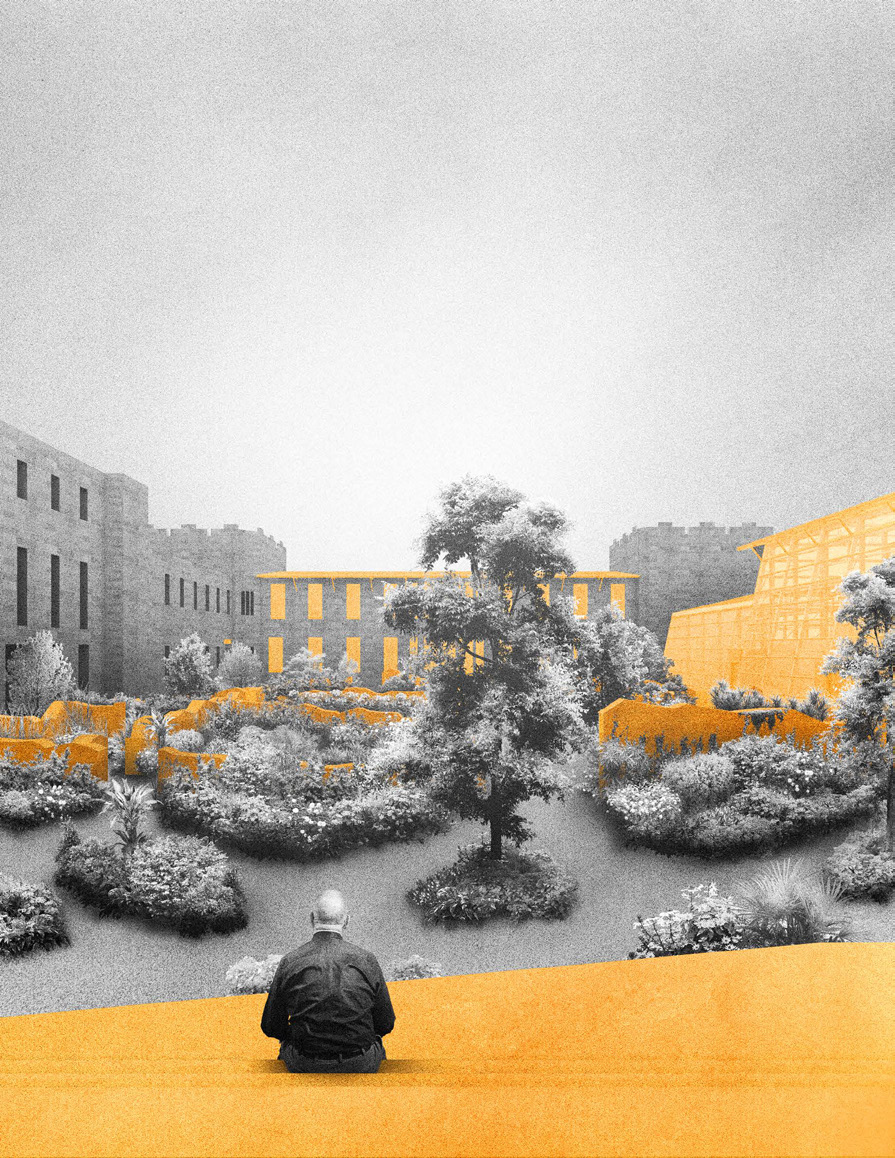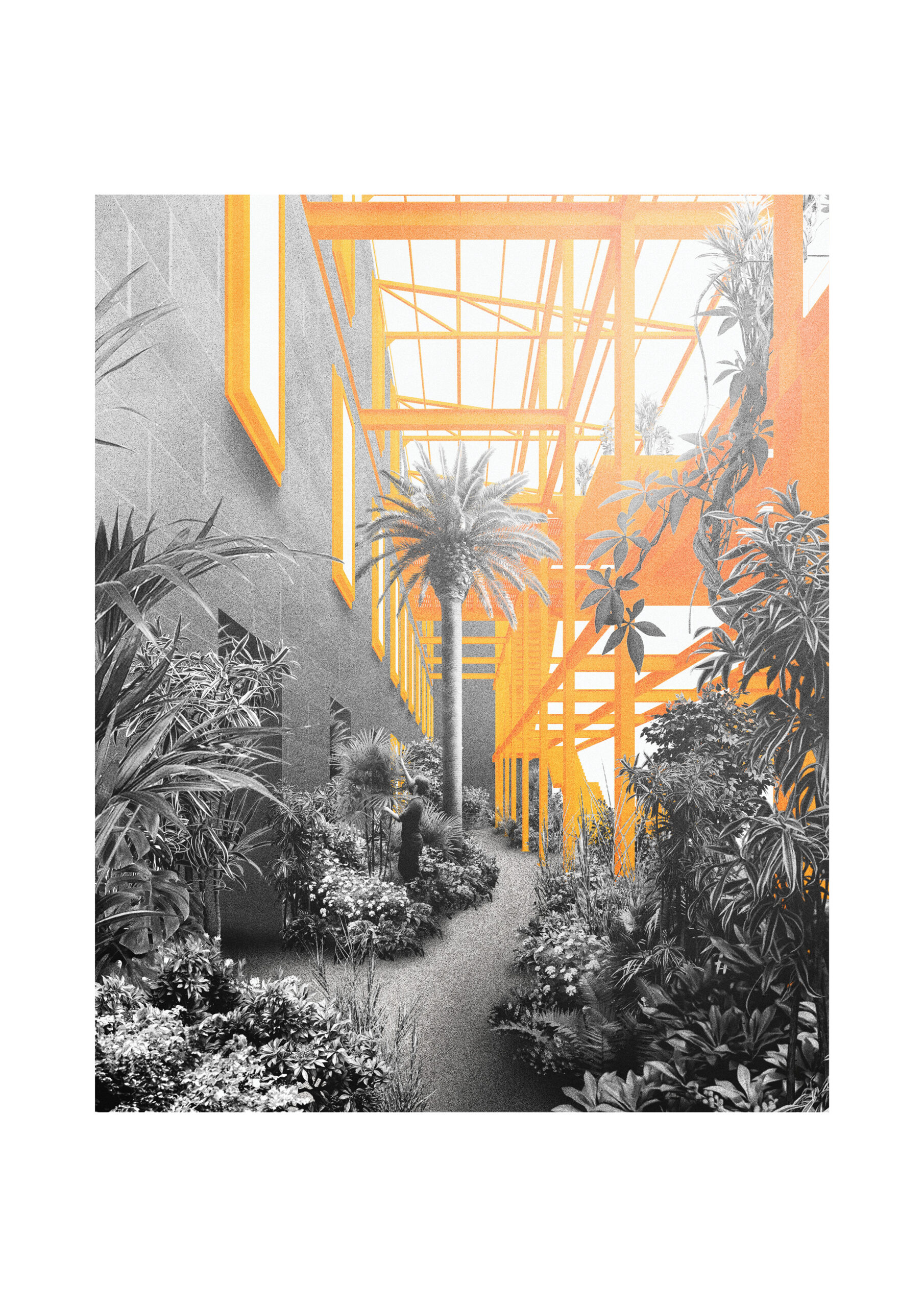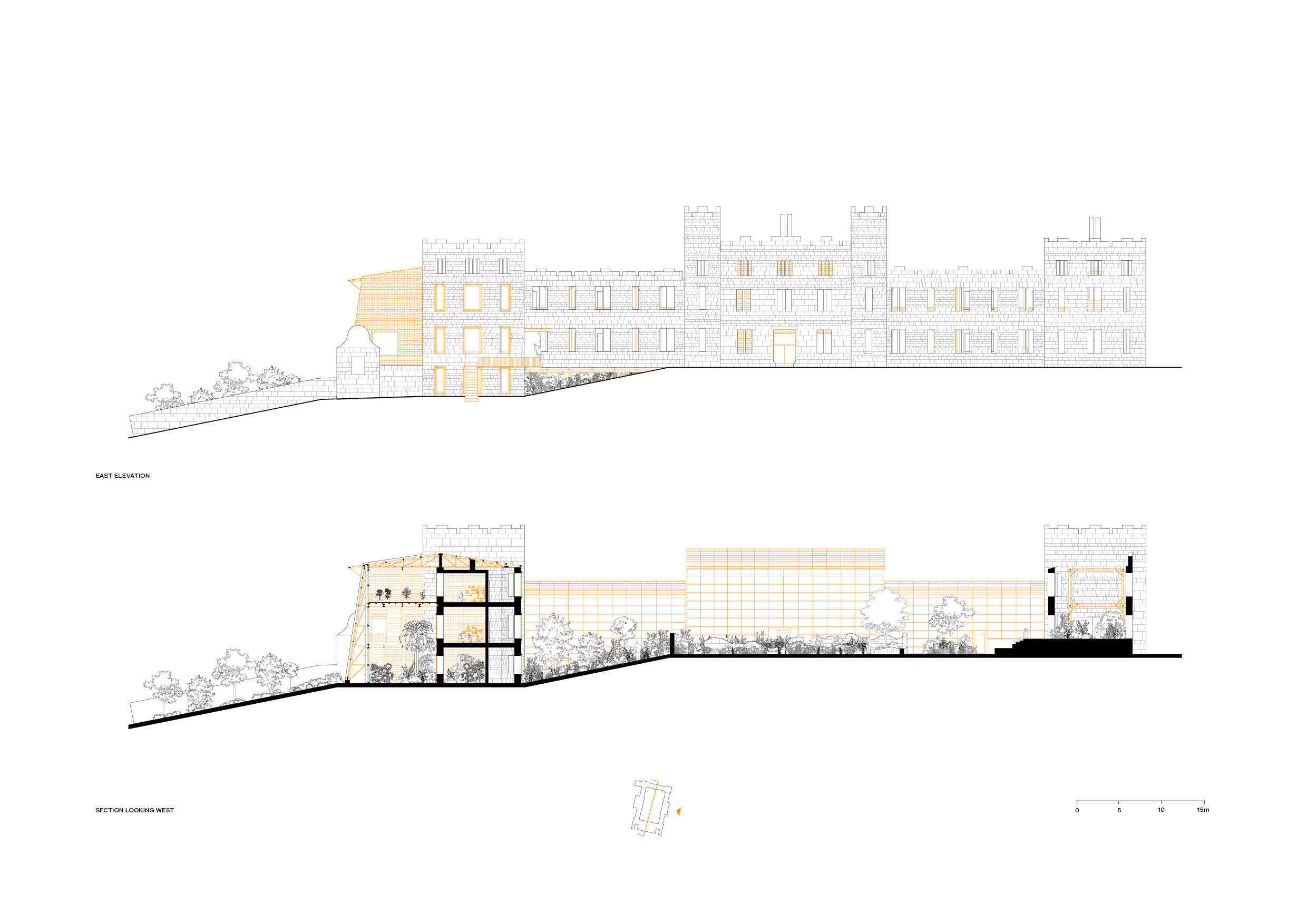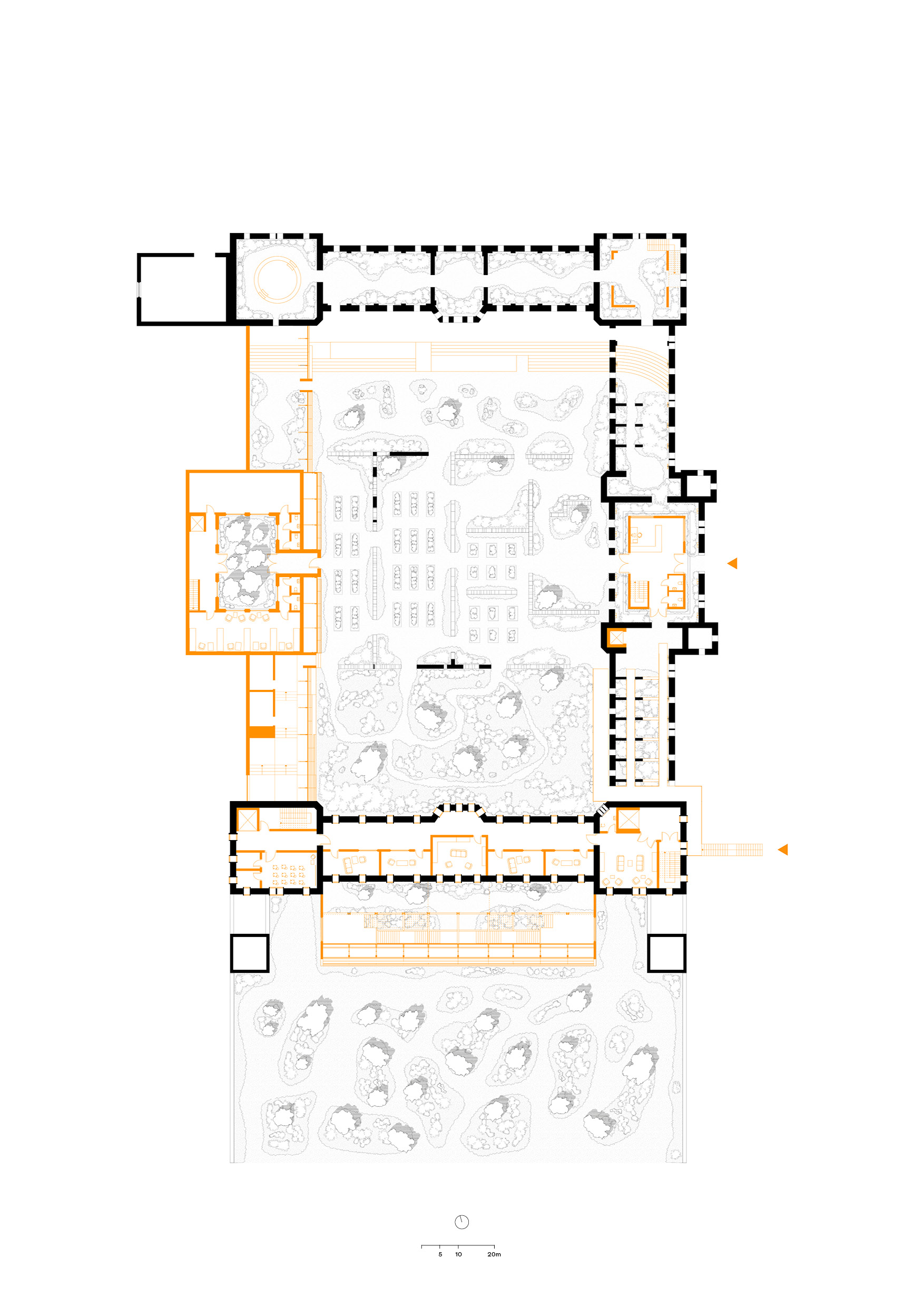This thesis utilises uses repurposing of existing urban fabric as an ethical approach to architectural design and placemaking. It champions context driven re-use with respect for the past combined with a radically cautious vision for the future.
The chosen site is the ruin of the East building of Gartnavel General Hospital, an old mental asylum with a rich history of utilising horticulture to treat patients. A therapeutic garden is reintroduced and complemented with a series of alterations to the existing structure as well as new additions.
The project uses a design method inspired by that of the gardener; a patchwork of small gestures intended to slowly alter the building rather than using all encompassing grand statements. In a garden the individual has the agency to change and alter shape and appearance no matter how fleeting the duration. This ever evolving process of attention and care provides a sense of meaning and empowerment perfectly suited for therapeutic purposes. The thesis views the ruin in a similar light, treating it in much the same way as a garden. Never complete, in a state of constant change and metamorphosis.
The ruin is a symbol with contrasting meanings. It reminds us of the immense potential embedded in the human mind. It also makes us aware of the inescapable decay of everything, ourselves included. Nature inevitably takes over. The ruin highlights our incredible potential as well as our physical limitations. It is empowering yet humbling.This thesis aims to be a celebration of this back and forth between human agency and the forces of nature. Nothing stays the same, and that is a good thing, because it provides us with opportunities to engage with the world. Looking after and tending to each other and our environment because it gives us meaning and purpose.





